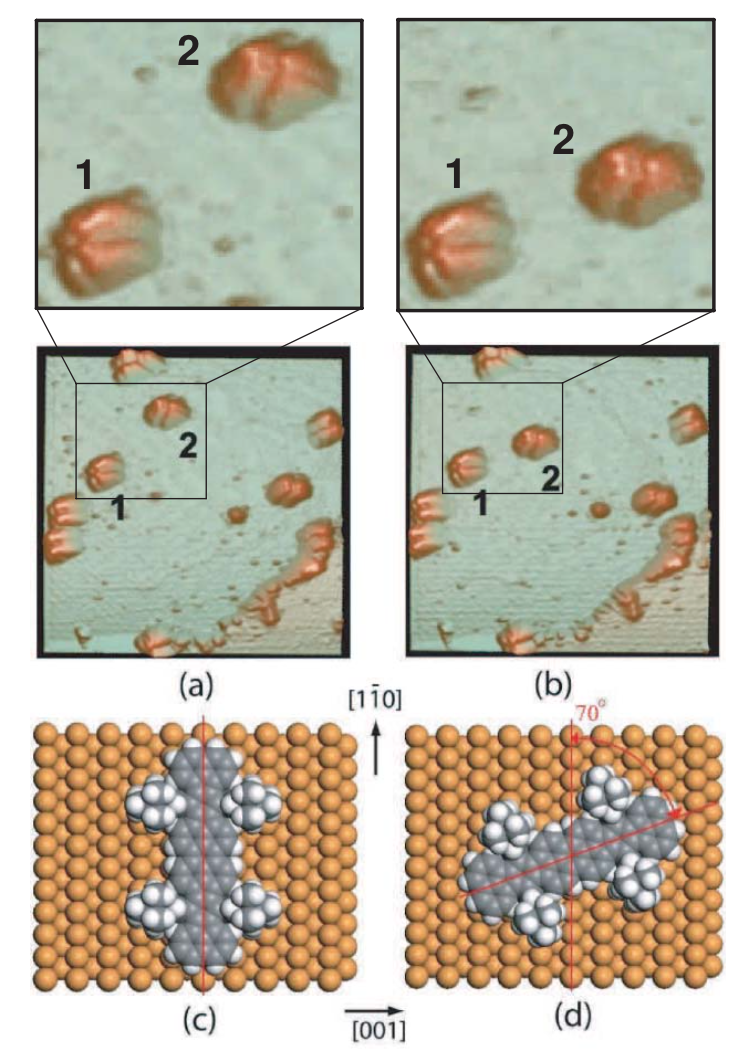http://scholar.google.com/citations?hl=en&user=95SvbM8AAAAJ
1.
Sato, F; Legoas, SB; Otero, R; Hummelink, F; Thostrup, P; Lægsgaard, E; Stensgaard, I; Besenbacher, F; Galvao, DS
Adsorption configuration effects on the surface diffusion of large organic molecules: The case of Violet Lander Journal Article
Em: The Journal of chemical physics, vol. 133, não 22, pp. 224702, 2010.
@article{sato2010adsorption,
title = {Adsorption configuration effects on the surface diffusion of large organic molecules: The case of Violet Lander},
author = {Sato, F and Legoas, SB and Otero, R and Hummelink, F and Thostrup, P and Lægsgaard, E and Stensgaard, I and Besenbacher, F and Galvao, DS},
url = {http://scitation.aip.org/content/aip/journal/jcp/133/22/10.1063/1.3512623},
year = {2010},
date = {2010-01-01},
journal = {The Journal of chemical physics},
volume = {133},
number = {22},
pages = {224702},
publisher = {AIP Publishing},
abstract = {Violet Lander (C108H104) is a large organic molecule that when deposited on Cu(110) surface exhibits lock-and-key like behavior [Otero et al., Nature Mater. 3, 779 (2004)]. In this work, we report a detailed fully atomistic molecular mechanics and molecular dynamics study of this phenomenon. Our results show that it has its physical basis on the interplay of the molecular hydrogens and the Cu(110) atomic spacing, which is a direct consequence of the matching between molecule and surface dimensions. This information could be used to find new molecules capable of displaying lock-and-key behavior with new potential applications in nanotechnology.},
keywords = {},
pubstate = {published},
tppubtype = {article}
}
Violet Lander (C108H104) is a large organic molecule that when deposited on Cu(110) surface exhibits lock-and-key like behavior [Otero et al., Nature Mater. 3, 779 (2004)]. In this work, we report a detailed fully atomistic molecular mechanics and molecular dynamics study of this phenomenon. Our results show that it has its physical basis on the interplay of the molecular hydrogens and the Cu(110) atomic spacing, which is a direct consequence of the matching between molecule and surface dimensions. This information could be used to find new molecules capable of displaying lock-and-key behavior with new potential applications in nanotechnology.
2010
1.

Sato, F; Legoas, SB; Otero, R; Hummelink, F; Thostrup, P; Lægsgaard, E; Stensgaard, I; Besenbacher, F; Galvao, DS
Adsorption configuration effects on the surface diffusion of large organic molecules: The case of Violet Lander Journal Article
Em: The Journal of chemical physics, vol. 133, não 22, pp. 224702, 2010.
Resumo | Links | BibTeX | Tags: DFT, Diffusion, Molecular Electronics, STM, Violet Lander
@article{sato2010adsorption,
title = {Adsorption configuration effects on the surface diffusion of large organic molecules: The case of Violet Lander},
author = {Sato, F and Legoas, SB and Otero, R and Hummelink, F and Thostrup, P and Lægsgaard, E and Stensgaard, I and Besenbacher, F and Galvao, DS},
url = {http://scitation.aip.org/content/aip/journal/jcp/133/22/10.1063/1.3512623},
year = {2010},
date = {2010-01-01},
journal = {The Journal of chemical physics},
volume = {133},
number = {22},
pages = {224702},
publisher = {AIP Publishing},
abstract = {Violet Lander (C108H104) is a large organic molecule that when deposited on Cu(110) surface exhibits lock-and-key like behavior [Otero et al., Nature Mater. 3, 779 (2004)]. In this work, we report a detailed fully atomistic molecular mechanics and molecular dynamics study of this phenomenon. Our results show that it has its physical basis on the interplay of the molecular hydrogens and the Cu(110) atomic spacing, which is a direct consequence of the matching between molecule and surface dimensions. This information could be used to find new molecules capable of displaying lock-and-key behavior with new potential applications in nanotechnology.},
keywords = {DFT, Diffusion, Molecular Electronics, STM, Violet Lander},
pubstate = {published},
tppubtype = {article}
}
Violet Lander (C108H104) is a large organic molecule that when deposited on Cu(110) surface exhibits lock-and-key like behavior [Otero et al., Nature Mater. 3, 779 (2004)]. In this work, we report a detailed fully atomistic molecular mechanics and molecular dynamics study of this phenomenon. Our results show that it has its physical basis on the interplay of the molecular hydrogens and the Cu(110) atomic spacing, which is a direct consequence of the matching between molecule and surface dimensions. This information could be used to find new molecules capable of displaying lock-and-key behavior with new potential applications in nanotechnology.


